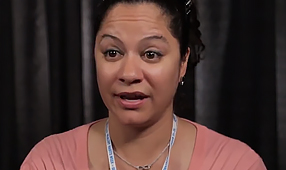You work hard to provide for your family now and in the future. Although thinking about your family’s lives after you’re gone is difficult, it’s crucial to consider how to help them carry on financially if you were to pass away and your income were to disappear.
One way you can plan to help keep loved ones supported is through life insurance. But you need to be sure you have the right amount. Like many educators, you may get some life insurance offered through your district, but you may realize that it doesn’t cover all of your needs. Supplemental life insurance can be a good option to help cover your bases.
These five questions about important lifestyle scenarios can help you better understand what’s at risk if you don’t have a sufficient amount of life insurance.
Would your family be able to stay in your current home?
One of the biggest monthly expenses for many people is their mortgage or rent payment. The median monthly mortgage payment is $1,672 a month,1 while monthly utility costs in the U.S. average between $538–$613.2
With utilities, home insurance, HOA fees and other related costs, those monthly expenses really add up. For many people, it takes two incomes to cover all their housing expenses.
Imagine how the loss of your income could affect your loved ones’ ability to make those payments, plus the subsequent stress of trying to adjust – or even having to make the tough decision to move out of your family home.
That’s why it’s important to consider your housing expenses when determining whether your current life insurance plan could cover all of it for your family.
Would your family be able to pay off outstanding debt?
The average American has $92,727 worth of debt3. That’s a large amount for loved ones to incur suddenly. Credit card debt, car payments, student loans: Any of these debts could become the responsibility of your spouse or parents if you were to pass.
If the debts you owe are paid by your estate, then that can reduce the assets you had intended to leave behind to make sure your family is cared for.
Assess your current outstanding debt and be sure you have enough life insurance coverage to make it easy for your loved ones to pay it off. And don’t forget to reassess your insurance policy when you incur new debts, such as buying a car or refinancing your home.
Would your children be able to pursue their education?
As an educator, you know how important — and how expensive — a college education can be. But those dreams of higher education can disappear if you pass away and your income is no longer available to assist with the bills.
In the U.S., the average cost of college is $35,720 per student per year4. Life insurance can help protect your children’s educational aspirations and make it a little easier to pursue them.
Would your loved ones be able to achieve other goals?
As sad as it will be for you to miss future milestones, such as weddings and retirements, imagine if the financial strain of your missing income were to cause further stress.
For instance, although you and your partner may have saved for retirement, they may not have planned for you — and your paycheck — to disappear. Without life insurance, they may be hesitant to retire when planned out of fear that they won’t have enough income to sustain themselves in retirement.
Or, if you have the desire to help your children or grandchildren pursue their dreams and aspirations — such as traveling, entrepreneurship opportunities or even pursuing a hobby you now enjoy together — your life insurance coverage could be used to help make it easier for them while also leaving a legacy behind.
Would your family be able to pay your final expenses?
Funerals can be surprisingly expensive. The national median cost of a funeral with viewing and burial was $7,640 in 2019.5 It’s not an event for which anyone wants to save, but without life insurance, your family may need to scramble to cover those costs, adding stress to an already difficult time.
In a 2020 survey of NEA members, paying off burial expenses was cited as the top reason for having life insurance.6
Your NEA membership gives you access to affordable life insurance options
While loss is always difficult, you can plan now to help your loved ones during that difficult time when you’re gone by considering their dependence on your income when assessing your life insurance needs.
You likely already have some life insurance coverage from your district, but it’s a good idea to dig into the details to make sure it’s enough to help cover all the costs your family may incur after you’re gone. If not, consider supplementing it with an additional policy.
Although 95% of NEA members surveyed in 2020 noted cost as a top barrier to purchasing life insurance,6 it actually may not be as expensive as you think. In fact, 42% said the cost of NEA® Group Term Life Insurance, issued by The Prudential Insurance Company of America, was lower than expected!6
As an NEA member, you benefit from the buying power of more than 3 million NEA members, which allows the NEA Members Insurance Trust to offer discounted rates on life insurance plans.
As you ponder the costs of not having enough life insurance, think about how much coverage you might be able to get for an affordable rate each month. It might be less than you think, and in the long run, it will help ensure your family can still pursue their future aspirations after you’re gone — and give you some added peace of mind now.
Ready to learn more? Get an instant quote on an NEA® Group Term Life Insurance Plan.












